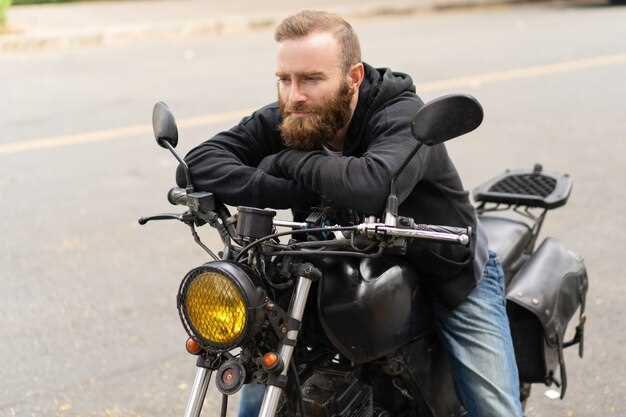
Learning to ride a motorcycle is an exhilarating journey that opens up a new world of freedom and adventure. However, for new riders, mastering the fundamentals of motorcycle handling is crucial to ensure safety and confidence on the road. This article delves into essential riding techniques that will help new motorcycle enthusiasts develop their skills and enjoy their rides.
Effective handling begins with understanding your motorcycle’s controls and responsiveness. New riders should familiarize themselves with the throttle, brakes, and clutch, as well as the balance of the bike. Proper body positioning and weight distribution play a significant role in how well you can maneuver your motorcycle through various terrains and conditions.
As you progress, learning to read road conditions and anticipate potential hazards will enhance your riding experience. Basic techniques such as cornering, braking, and turning will become second nature with practice. By honing these fundamental riding skills, you will gain not only confidence but also a deeper appreciation for the art of motorcycle riding.
Understanding the Clutch and Throttle Control
In motorcycle riding, mastering the clutch and throttle is crucial for effective handling and safe maneuvering. The clutch, typically operated with the left hand, facilitates the smooth engagement and disengagement of the engine from the wheels. This allows riders to change gears without stalling the motorcycle, which is essential for maintaining control during acceleration and deceleration.
The throttle, located on the right handlebar, controls the engine’s power output. By twisting the throttle, the rider can increase or decrease engine speed, which directly influences the motorcycle’s acceleration. Balancing both the clutch and throttle is vital for achieving a seamless riding experience, especially in varying conditions such as low-speed maneuvers or when navigating turns.
When starting from a stop, a rider must gradually release the clutch while simultaneously applying throttle. This coordination helps prevent stalling and ensures a smooth takeoff. Conversely, when slowing down, pulling in the clutch allows the rider to shift to a lower gear without losing control, enabling smoother deceleration.
Understanding how to manipulate both controls effectively enhances a rider’s ability to handle the motorcycle in diverse situations, contributing to a more confident and enjoyable riding experience. As a new rider, investing time in practicing clutch and throttle control will significantly improve your handling skills and overall safety on the road.
Mastering the Art of Cornering and Leaning

Cornering is one of the most critical skills in motorcycle riding, directly impacting your overall handling and safety. To navigate turns effectively, riders must develop a keen sense of balance and control. This involves not only understanding the dynamics of the motorcycle but also mastering the techniques of leaning into corners.
Key Techniques for Cornering:
First, approach the corner with the right speed. Entering too fast can result in losing control, while going too slow may cause imbalance. As you near the turn, start by shifting your body weight towards the inside of the corner. This helps to maintain stability and traction throughout the maneuver.
Next, look through the turn. Your head should lead your body, guiding your motorcycle in the desired direction. Keep your eyes focused on the exit, rather than directly in front of you. This technique not only enhances confidence but also allows for better handling during the turn.
Leaning Effectively:
Leaning is an essential aspect of cornering. Leaning your body while keeping the motorcycle upright allows for smoother transitions. Aim to lean at the same angle as the motorcycle, maintaining a fluid motion. This synchronized movement between rider and bike ensures optimal contact with the road surface, enhancing grip and control.
Remember to use your legs and arms correctly. Your legs should grip the tank firmly, while your arms stay relaxed on the handlebars. This positioning aids in better handling and reduces fatigue, enabling longer rides with more precision in cornering.
Practicing Cornering:
To improve your cornering and leaning skills, practice in a controlled environment. Find an empty parking lot or a closed course with gentle curves. Start with slow speeds, gradually increasing as you become more comfortable. Focus on the techniques mentioned, and over time, you will develop muscle memory that enhances your riding confidence.
Mastering cornering and leaning not only improves your motorcycle handling but also contributes significantly to your safety on the road. By honing these essential skills, you’ll enjoy a more exhilarating and secure riding experience.
Practicing Emergency Braking and Swerving Skills

Mastering emergency braking and swerving techniques is essential for any new motorcycle rider. These skills enhance your handling capability in critical situations, ensuring your safety and that of others on the road. Begin by identifying a safe, open area free of traffic and obstacles to practice these maneuvers.
To practice emergency braking, accelerate to a moderate speed and then apply the brakes firmly but smoothly. Focus on using both the front and rear brakes simultaneously. This technique helps maintain stability while reducing stopping distance. Ensure to practice with varying speeds and conditions, as different scenarios will require different approaches.
Swerving techniques are equally important for navigating unexpected obstacles. Start by riding in a straight line and, when ready, simulate an obstacle by imagining one or using a cone. Lean the motorcycle gently while simultaneously applying throttle to maintain speed and balance. The goal is to shift your body weight effectively and steer around the obstacle without losing control.
Consistent practice of these skills not only builds confidence but also improves your overall riding awareness. Remember to stay relaxed; tense body muscles can hinder your handling abilities. Regularly scheduled practice sessions will ensure these vital skills become second nature, preparing you for real-life emergencies on the road.
